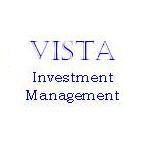 Author: John Frankola, Vista Investment Management
Author: John Frankola, Vista Investment Management
Covestor models: Core Holding, Core Equity
Equity markets rallied strongly in the first quarter of 2012 as the US economy continued to show signs of improvement and fears of a debt crisis in Europe subsided. The S&P 500 Index generated a 12.6% total return for the quarter. It was the best quarterly performance since the third quarter of 2009 and the strongest first quarter since 1998. It was the second quarter in a row which produced double-digit gains. In the past six months the S&P 500 has risen 25.9%.
However, those gains primarily represent a recovery from bear market territory. As can be seen in the table below, returns for the one-year period are single digit for S&P 500 and negative for the other indices.
The mixed performance and wild swings in equity prices over the last 12 months primarily reflect disappointing economic results for most major economies. According to the Wall Street Journal Economic Forecast Survey, at this time last year economists were forecasting US GDP growth of 3.5% for 2011. Actual growth was just 1.6%. European Union (EU) GDP grew at 1.5% in 2011, with Germany’s 3.0% growth (20% of EU GDP) helping to offset weakness in the United Kingdom (+0.8%), Italy (+0.4%), Spain (+0.7%), Greece (-6.8%), and Portugal (-1.6%). Emerging market economic growth slowed as well. According to the International Monetary Fund, emerging market GDP growth declined from 7.3% in 2010 to 6.4% in 2011.
The recovery in stock prices from the lows of last fall seems to reflect that risk of another global financial meltdown has been significantly reduced by actions taken to resolve the European sovereign debt crisis. However, numerous other concerns persist. Global economic growth remains weak and unemployment in most western economies is above acceptable levels. Government deficits and debt remain high. Rising oil and gasoline prices pose a threat to further economic growth. Geopolitical tensions, especially related to Iran’s nuclear program and a possible preemptive attack by Israel, represent a risk to markets.
One of the more positive trends in the first quarter was a significant reduction in volatility – especially negative volatility. During the last five months of 2011, the S&P 500 Index closed 2% higher or lower than the previous day’s closing price on 30% of all trading days. In the first quarter, there were no days when the market moved more than 2%. There were just five days when the market moved by more than 1% – and four of those days the market closed higher. Because most investors see volatility as a significant investment risk, the lower volatility likely helped to bolster investor sentiment.
In addition to lower volatility supporting the market, I see the potential for three other major trends to provide positive market support over the near and long term.
Higher stock prices provide a positive wealth effect for investors, which should be stimulative for the economy. The Great Recession and collapse of the stock market had a negative wealth effect. Many investors deferred purchases as their portfolios shrunk. As investors see their net worth advance, they are more likely to replace an old car, buy a home, go on a vacation, or make a major purchase. In addition, higher stocks should produce higher tax revenues related to capital gains and allow more individuals to retire (opening up jobs in the work force).
As investors regain faith in the stock market, money is likely to shift from fixed income and money market investments back into equities. With the 10-year Treasury bond yielding just 2.2% and money markets funds yielding close to 0%, investors are likely to seek out higher returns in equities. The Investment Company Institute (ICI) reports that there is currently $2.6 trillion invested in money market mutual funds – all this money earning next to nothing.
Housing prices declined for the fifth consecutive year in 2011. The current economic recovery has occurred without any help from the housing industry. Economists are currently forecasting flat housing prices for 2012. A stabilization or modest increase in housing prices should have an extremely positive impact on the economy and stock market.
Fixed income investments generated modest returns in the first quarter as interest rates nudged higher. The BarCap Aggregate Bond Index, which measures the performance of the taxable bond market, generated a 0.3% return during the quarter. The BarCap Municipal Bond Index produced a 1.8% return. The yield on the benchmark 10-year Treasury bond increased from 1.88% to 2.22% during the quarter.
Fixed income investments will likely suffer as the economy and stock market recover. Having served as a safe haven during a period of slow growth and high uncertainty, money is likely to shift out of this investment class as investors accept greater risk for the possibility of higher returns.
Clearly, the general public is still hesitant to put money into the stock market considering the weak performance of the last 5 and 10-year periods and lingering risks to the global economic recovery. However, this caution has kept equity investments in a reasonably-valued range, which should allow for attractive returns for investors with a long-term focus.


